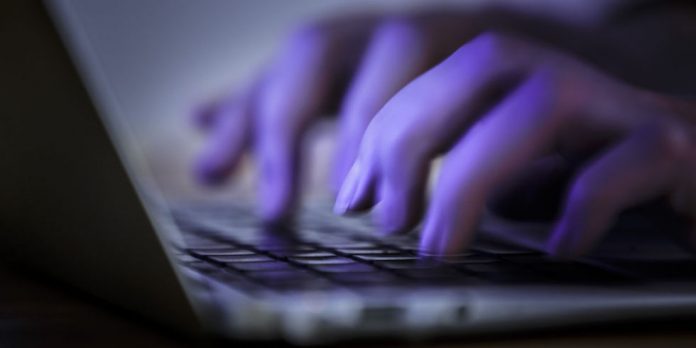In this article, Debmalya Banerjee who is currently pursuing Diploma in Entrepreneurship Administration and Business Laws from NUJS, Kolkata, discusses the legal implications regarding offensive messages on social media and on SMS
Today it’s an era of cyber world and there is massive expansion in the growth of technology. As Information Technology evolved it gave birth to the cyber space where internet provides unrestricted access and opportunities to any people to have access to any information, data storage at anytime with the help of high technology. This led to the inevitable misuse of technology in the cyber world and as a result giving rise to various “cyber crimes” at the domestic as well as in the international level.
The growth of Social Networking
As popularly known as “social networking” is the new fad in India and very few person could escape from its clutch. Consequently, this has also given rise to many legal issues as well. Most of these legal issues pertains to online acts or omissions that are resulting in giving rise to civil and criminal liabilities.
The age of Internet Today: A newly found freedom of Speech and Expression
At this jun, ture it is noteworthy that Article 19 (1) (a) of the Constitution of India, 1950 guarantees “Right to freedom of speech and expression”. This is a fundamental right guaranteed to all citizens of India. The freedom of expression is not an absolute freedom which anybody can claim to enjoy. It is always subject to certain reasonable restrictions which the State may impose in the interest of the citizen or the country.
Laws regulating contents on Social Media
Social media law India is regulated by the Information Technology Act which was enacted in the year 2000 to regulate, control and deal with the issues arising out of the IT. Social networking media is an “intermediary” within the meaning of Indian information technology act 2000 (IT Act 2000). Thus social networking sites in India are liable for various acts or omissions that are punishable under the laws of India.
Section 66A of the IT Act has been enacted to regulate the social media law India and assumes importance as it controls and regulates all the legal issues related to social media law India. This section clearly restricts the transmission, posting of messages, mails, comments which can be offensive or unwarranted. The offending message can be in form of text, image, audio, video or any other electronic record which is capable of being transmitted. In the current scenarios such sweeping powers under the IT Act provides a tool in the hands of the Government to curb the misuse of the Social Media Law India in any form.
However, in 2015, in a landmark judgments upholding the right to free speech in recent times, the Supreme Court in Shreya Singhal and Ors. vs Union of India, struck down Section 66A of the Information & Technology Act, 2000. The ruling which is being lauded by the common man and legal luminaries alike, found the Cyber law provision to be open-ended, vague and unconstitutional owing to the restriction it caused to the Indian citizens’ right to free speech.
The repeal of S.66A does not however result in an unrestricted right to free speech since analogous provisions of the Indian Penal Code (IPC) will continue to apply to social media online viz. Intentionally Insulting Religion Or Religious Beliefs (S. 295A), Promoting Enmity Between Groups On Grounds Of Religion, Race Etc. (S. 153A), Defamation (S. 499), Statements conducing to Public Mischief (S. 505), Insulting The Modesty Of A Woman (S 509), Criminal Intimidation (S 506), Sedition (S124-A), etc.
One of the important section that would be effective against posting offensive messages on social media would be invoking sec 499 and 500 of IPC. Under the IPC, the defamatory statement could be oral or written or in sign language or by visible representation and should be made/ published with intention to harm or with knowledge about its defamatory character (IPC, section 499). Thus, section 499, IPC is wide enough to encompass the publication and dissemination of defamatory content via electronic means. Defamation is punishable under section 500, IPC.
Further, the law against obscenity is a reasonable restriction on the “fundamental right to freedom of speech and expression”. Technology has expanded the ambit of the offence of obscenity. Today, obscene material (including pornography) is easily available at the click of a mouse and people can access it in the privacy of their homes. The Internet facilitates the creation as well as rapid transmission of such material across the world. Legal regulation is complicated by the fact that there is no universally acceptable definition of obscenity. What is considered obscene material in one country may not be considered so in another. Technologically also, there is absence of effective filters to screen out objectionable material on the Internet.
The traditional law dealing with obscenity (including pornography) in India is contained in sections 292-294 of the IPC. Section 292, IPC prohibits sale, letting on hire, distribution, public exhibition and circulation etc., of obscene material. Section 293 provides enhanced punishment for sale etc. of obscene material to any person under the age of twenty years. Even an offer or attempt to do so is punishable. Publishing as well as circulating of obscene photographs of women is also punishable under sections 3 and 4 of the Indecent Representation of Women (Prohibition) Act, 1986. These provisions can also be used for punishing people who circulate obscene material in electronic form.
In view of the above, though sec 66A of the IT Act has been held unconstitutional by the apex court but still a victim of cyber offence would not be rendered remediless and could invoke the appropriate section and law to get desired relief.












There are lot of online shop in India they sell obscene items legally; is there any contradiction of law of selling obscene items.
Nice information about Section 66A.